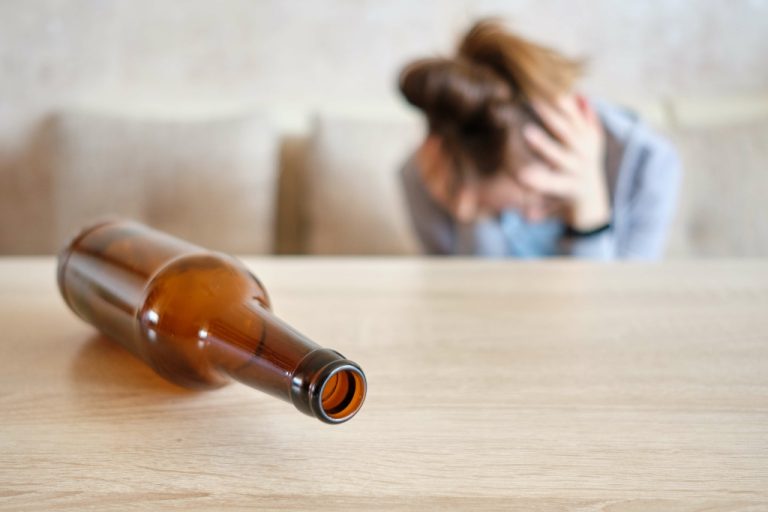Alcoholism in Teenagers: Signs, Support, Treatment
According to the Centers for Disease Control and Prevention (CDC), alcohol is the most commonly used substance among young people in the US. Although rates of drinking and binge drinking have been going down over recent decades, national surveys show that among youth and young adults, one in five report drinking alcohol in the past 30 days, and one in 10 report binge drinking. The 2019 Youth Risk Behavioral Survey found that more than a quarter of high school students drank alcohol in the 30 days before they took the survey, and one in seven reported binge drinking in that same time period.
Issues with brain development
For instance, alcohol use at a young age can negatively affect the prefrontal cortex, which is thought to control a person’s ability to think clearly and make good decisions. Damage to the hippocampus, a part of the brain involved in learning and memory, can also occur as a result of heavy alcohol use. At The Recovery Village, we are available to confidentially discuss your family’s situation with you, free of charge and with no obligation. We can help you determine the next steps and if ateen alcohol rehabis the right solution for you. Don’t turn a blind eye to your teen’s alcohol abuse — get them the help they need.
The Best Online Therapy Platforms
Beliefs (“drinking will help merelax”) and urges (“I need to have a drink!”) determine how anindividual is likely to respond to these cues. Individuals oftenhave facilitating beliefs (“I’ll only have one drink”). All of thisleads the individual to take action, often taking a drink. Risk factors are things that increase the likelihood that a teen may drink alcohol underage.
Lifetime consumption among 10th graders decreased significantly from 2023 to 2024, Alcoholics Anonymous and 32% since 2015. If you’re going to a party and you know there will be alcohol, plan your strategy in advance. You and a friend can develop a signal for when it’s time to leave, for example.
Risk-taking
Drinking also gives people bad breath, and no one enjoys a hangover. Most programs in use were originally designed for adults (White et al.,2002; Dennis, 2002), and it is rare to find standaloneprograms for adolescents. Program models specifically designed foradolescents are more effective than programs based on adult regimens(Personal communication, Randolph Muck, Center for Substance AbuseTreatment, June 1, 2001). My mother was always very honest with me about her struggles with alcoholism. She quit drinking before I could develop any memories of her drinking. My teen years, however, held a very different reality in store for me.

Teen Drinking Statistics 2025 By Future Impacts
Teens learnimproved communication with other family members and copingmechanisms for stress. Similar sessions are held with familymembers, in which parents examine their parenting style and learn tohave a positive influence on their child (Schmidt, Liddle, and Dakof,1996). Assessment is important to determine the type of treatment approachto which an adolescent may respond (Pickens and Fletcher, 1991; Bergmann, Smith, andHoffman, 1995; Jainchill, Bhattacharyo, and Yagelka,1995; Werner, 1995).
- That’s an awful lot of youth who could be changing their brains — and their lives — forever.
- The National Institute on Alcohol Abuse and Alcoholism reports that a significant number of college students choose not to drink, and many social activities and groups on college campuses do not center around alcohol.
- The goal of inpatient treatment is toprovide sufficient structure to allow the patient to make major lifechanges, while strictly limiting access to alcohol and drugs.
- Recognizing the signs and symptoms of teen alcoholism is crucial for early intervention and support.
- Talk It Out suggests the whole family Take the Pledge to keep kids free from alcohol use by clicking here or opting in by text.
Popular Health Centers
Between 2021 and 2024, the survey noted declines in the prevalence rates of alcohol consumption among 12- to 20-year-olds, including reaching historic low levels in lifetime, annual, and past month consumption. Additionally, in 2024 there were statistically significant decreases, year over year, in past month consumption, binge drinking, and heavy alcohol consumption among 12- to 20-year olds. Good programs are based on an understanding of gender socializationand the cultural background of the patient. For example, there is ahigh correlation between childhood trauma and substance usedisorders for girls and women. Often female substance abusers andthose who are dependent on alcohol and other drugs have beensexually abused.
Addiction Treatment
At the same time, they’re undergoing neurological shifts teenage alcoholism that may make them more driven to seek rewards without an adult’s ability to accurately assess hazards. The human brain does not finish developing until roughly 25 years of age. As a result, introducing alcohol to it before this time can have serious consequences on its normal growth process.
Is it OK for my 15-year-old to drink alcohol for their brain?
If your child is engaging in underage drinking, online mental health counseling might be an effective treatment method for them. The licensed mental health professionals at TeenCounseling can provide counseling completely online, which may be helpful if your teenager is nervous about going to a therapist’s office. This can make them vulnerable to peer pressure, which can play a role in the choice to try alcohol or engage in binge drinking. When hanging out at large parties or even with just a few friends, it can be hard to refuse a drink. Some teens choose to drink alcohol at such an event in order to preserve their status or reputation among their peers. The Recovery Village aims to improve the quality of life for people struggling with a substance use or mental health disorder with fact-based content about the nature of behavioral health conditions, treatment options and their related outcomes.

According to Brislin, this is one of the first studies to simultaneously examine the unique contributions of genetic, neural, psychological and environmental risk factors in early alcohol use. Notably, genetic risk factors—particularly those related to behavioral disinhibition—remained predictive even when other variables were accounted for, underscoring the promise of integrating genetic and behavioral screening in prevention science. Binge drinking among college students remained relatively unchanged in 2024, but continues to decline after a significant increase in 2021. Most youth don’t drink and alcohol consumption among the nation’s youth continues to gradually decline. Nearly 87% of high school seniors have not been drunk in the past month, with less than 13% reporting they have engaged in this behavior.
Categories
- ! Без рубрики
- .gruporcv.es
- .inhisetconsulting.com
- .rutadelamilpa.mx
- 1
- 1bet5
- 1GullyBet
- 1win Azərbaycan
- 1win-azerbaycan.az
- 1win-eg.net
- 1win-qeydiyyat.com
- 1winazerbaycan.org
- 1xbet
- 1xbet-uzbek.org
- 1xbet1
- 1xbet2
- 1xbet3
- 1xbet3231025
- 1xbet4
- 1xbet7
- 1xbetcasinoonline.com
- 1xslot.beregaevo.ru 36
- 2
- 20betschweiz.ch
- 22betofficial.com
- 22betschweiz.com
- 40-burning-hot-6-reels.gr
- 7Slots
- 9557gv0y4t
- a16z generative ai
- a16z generative ai 1
- adobe generative ai 1
- adobe generative ai 2
- ai chat bot python
- AI News
- almas-barbershop.de
- ancorallZ 3000
- ancorallZ 900
- apolonio.escasinos-con-deposito-minimo-1-e
- aquaservice-alicante.es
- armommy.com
- atlas-export.c
- bancorallZ 200
- bcg4
- bcgame1
- bcgame2
- bcgame3
- bcgame4
- bedpage
- beregaevo.ru 36
- berkeleycompassproject2
- berkeleycompassproject3
- bet1
- bet2
- bet3
- bet4
- betting2
- betwinner1
- betwinner2
- betwinner3
- betwinner4
- bezhinternat.ru 4-8
- bildungsinstitut-reittherapie.de
- blog
- blog-1302
- blog-789
- bonanzagame
- bonanzareels
- Bookkeeping
- Casino
- casino1
- casino1-1
- casino10
- casino10-1
- casino11
- casino12
- casino13
- casino14
- casino15
- casino16
- casino17
- casino18
- casino18-1
- casino19
- casino2
- casino21
- casino22
- casino23
- casino24
- casino25
- casino26
- casino28
- casino29
- casino3
- casino30
- casino31
- casino4
- casino5
- casino6
- casino7
- casino8
- casino9
- casinobet1
- casinos1
- cccituango.co 14000
- CH
- chat bot names 4
- CIB
- cienmilpeces.cl
- citybike-nordhorn.de
- cityoflondonmile1
- cityoflondonmile2
- cityoflondonmile3
- cityoflondonmile4
- coincasino
- comedychristmas.ch
- Cryptocurrency service
- cultura.cosenza
- daavdeev.ru 4-8
- Delivery Service 191
- dxgamestudio.com
- E-commerce
- EC
- elagentecine.cl
- ERP
- esqueleto-explosivo
- exbroker1
- Excursions 611
- exness3
- exoneit.de
- f1point0.com
- Fairspin-casino
- fanarbeit.ch
- farma3
- farma4
- farmaci1
- farmacia
- farmacia1
- farmacia2
- feelyourbody.ru 120
- FinTech
- firstdepositbonus
- Forex Trading
- fysiotek.gr
- gameaviatorofficial.com
- games
- gizbo-sloty.ru
- gullybetofficial.com
- hospicehomejc.org
- hotlinecasino
- how does generative ai work
- i-ksiazka.pl
- icesailing.dk
- icestupa1
- icestupa10
- icestupa13
- icestupa2
- icestupa3
- icestupa4
- icestupa6
- icestupa7
- icestupa9
- IGAMING
- igryfort.ru 120
- imageloop.ru 20
- inasound.ru
- Indonesia Casino
- Indonesia Casino1
- Indonesia Casino2
- Indonsia Slot Gacor
- Indonsia Slot Gacor2
- IT Vacancies
- IT Вакансії
- IT Образование
- ivibetcasino.ch
- jaya9
- jaya91
- jaya92
- jaya9casino
- Jetton
- jetton 23.09
- Jetton KZ
- Jetton RU
- jetton ru 23.09
- komod-testfeld
- krotam.net
- linebet-uzbekistan.org
- linebetonline.org
- lucky-star1
- lucky-stars
- mandarin-oriental.ru
- marktkauf-shs.de
- mbousosh10.ru 4-8
- mega168bet.com
- meta-park.es
- metody-platnosci.pl
- minaevlive.ru
- montecryptoscasinos.com
- mostbet-oynash.org
- mostbetuzcasino.com
- nationalnurse.org
- News
- News - Copy (2)
- News - Copy (3)
- Odoo
- okrogslovenije
- Omegle
- Omegle cc
- omitapparel
- Online Casino
- orthopaedic-partners.de
- pausenraum-freiburg.de
- pdrc
- Pin-Up
- Pin-Up AZ
- Pin-Up giriş
- Pin-Up indir
- Pin-Up oyunu
- Pin-UP VCH
- Pin-Up yukle
- pin-up-casino-login
- Pinco
- Pinco TR
- Pinup Azərbaycan
- pocket1
- pocket2
- pocketoption2
- pocketoption3
- pocketoption4
- poland
- Post
- posts
- press
- primexbt1
- primexbt2
- primexbt3
- rabonaonline.de
- ready_text
- reviews
- sansalvatrail.ch
- SBOBET1
- sharecroatia.hr
- slots
- Sober living
- Software development
- spinmachine
- spinmama-pl
- spinmamacasinos
- sputnikkey.ru
- stories
- styleconnection
- sugar-rush-1000.com.gr
- sugarrushslots
- sysgestionerp.cl
- t-store-smart.uz
- test
- Texs
- text
- themadisonmed.com
- thereoncewasacurl
- thereoncewasacurl.com
- thesaintaustere.com
- trader10
- trading11
- Trading3
- trading4
- trading5
- trading6
- trading7
- trading8
- traiding1
- traiding2
- Travelled
- trygge-norske-casino
- UK Casino
- ulola.hr
- Uncategorized
- updates
- vavada11.store
- vistetealamoda.es
- vohapress.uz
- volgambk.media 20
- wingsoverpittsburgh.com
- yacivic.ru 20
- yetsetboutique
- zendesk vs. intercom
- zurkastanie-marl.de
- Текста
- Финтех
- Форекс обучение